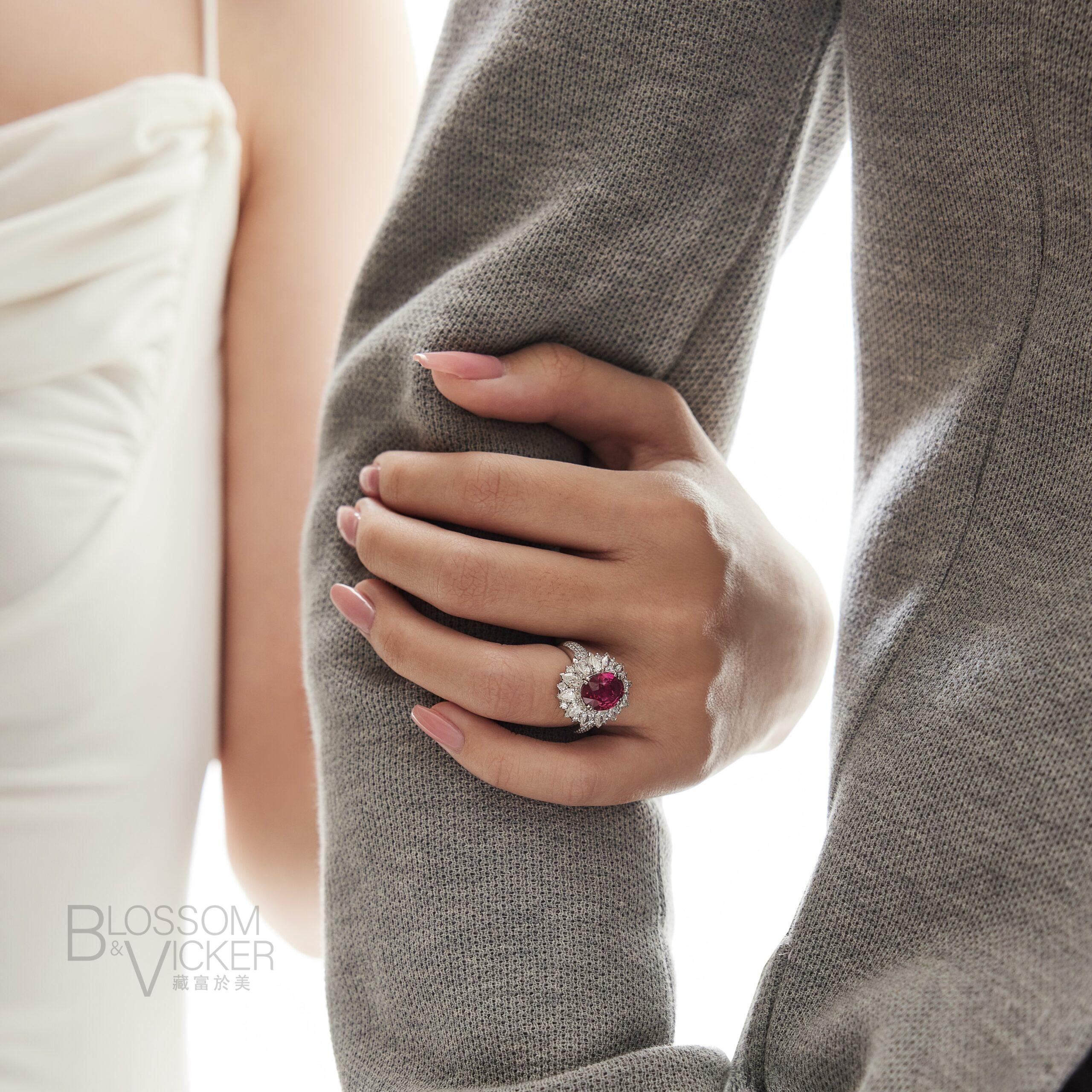In the Bible, rubies are regarded as the most precious of all 12 gemstones created by God. The intense red hues of rubies have always been associated with love and passion - the ‘gem of love’ symbolising the splendour, eternity and unwavering loyalty of love. Ruby is the birthstone of July. Beyond diamonds, rubies are also chosen to adorn royal jewellery.
Standard colour - Pigeon’s blood
Ruby is a corundum mineral alongside sapphire. Touted the king among the four precious stones, ruby has overtaken diamond in popularity and market price. Ruby has double refraction, where the red gemstone displays a secondary colour in purple, pink or orange, creating a vibrant appearance.
Pigeon’s blood red is the definitive colour standard the trade uses to describe vivid red rubies and could command an excellent price. For this reason, some laboratories tend to name different tones of rubies as “Pigeon’s blood” to mislead buyers.

Stunning ruby ring curated with love. (Blossom & Vicker)
Heated or unheated?
Colour is a crucial determinant of the value of coloured gemstones, and very slight variances can result in considerable price differences. This is why the industry has traditionally used heat treatment at specific temperatures to achieve desirable red tones and to remove visible inclusions.
When evaluating rubies, it is common to hear the terms ‘heated’ or ‘unheated’. However, over 95% of rubies in the market have undergone heat treatment to intensify their colour and appearance -an enhancement method widely accepted by the trade for decades. This has prompted a more robust demand for natural, untreated rubies, resulting in record-breaking prices.
Rubies of 3 carats and above command excellent investment returns.
Mohs hardness: 9
Origins: Myanmar, Madagascar, Sri Lanka, Mozambique, Thailand, Tanzania, China, India, Kashmir, Kenya, Zimbabwe, etc.
